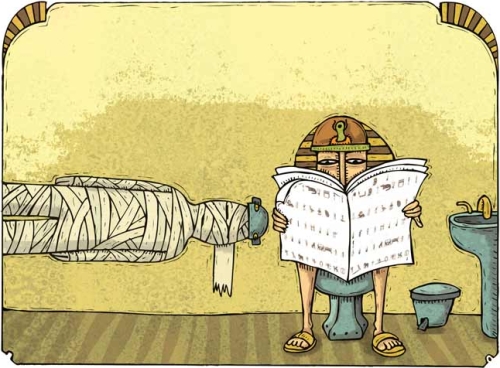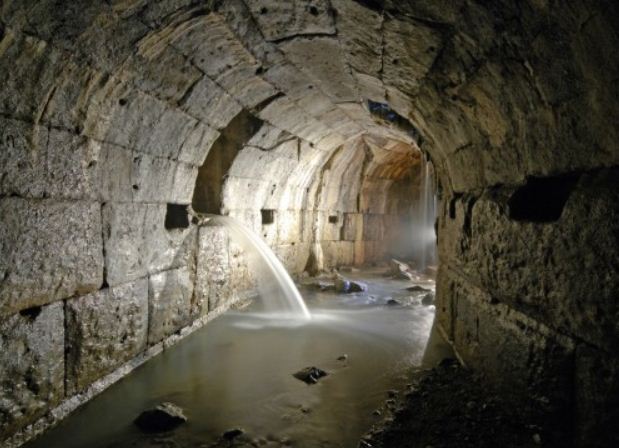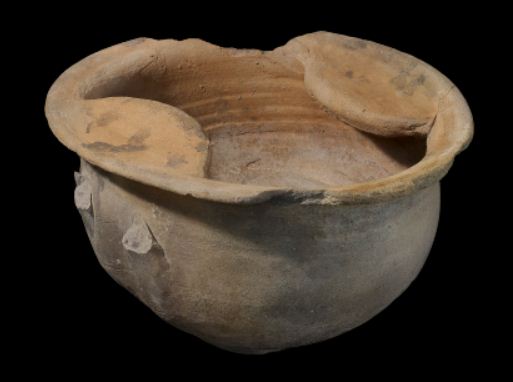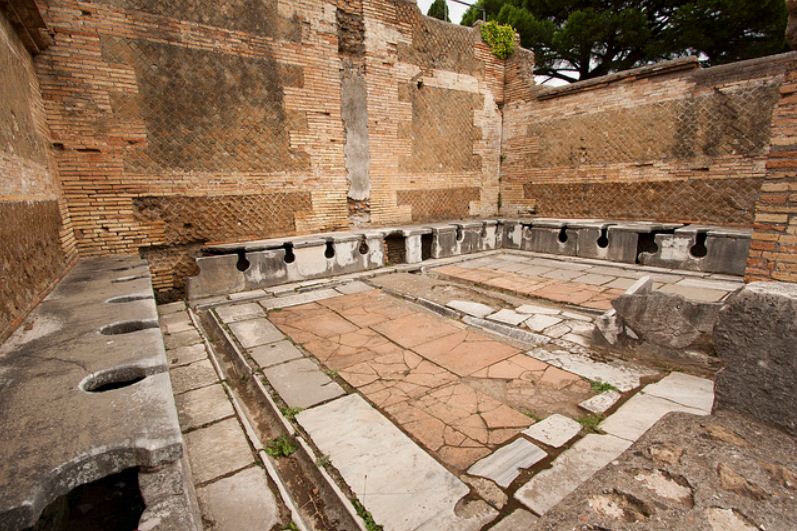
Do you use a bathroom?
Of course you do! Everybody does. They might vary in design or level of fanciness, sure, but every person on earth, and throughout history, has had to do their business. And they usually have done in a certain spot, be it a bush, a hole in the ground, a pot, or some form of toilet.
And people, usually, have used something to clean their bits and pieces afterwards. Ok, maybe not so much in the Middle Ages (hygiene was less of a thing then), but certainly in the ancient world.
I’m not usually one for bathroom history, but when it comes to the Romans I have to admit that they had a good system going, that is, if you weren’t shy.
So, we’re taking a brief look at the Roman toilet and accoutrements of going to the loo in the Empire.
If you’ve ever travelled to Roman archaeological sites, you will likely have seen a long or square room with stone benches. Along the benches are a series of evenly-spaced holes, and on the floor before the holes, are carved channels.

Remains of the latrine at Housesteads on Hadrian’s Wall
Welcome to the public toilet, or Roman military latrine!
Today we like our privacy, of course, but in the Roman age, unless you were in your privy at home, you were doing your business alongside everyone else.
That’s right! If you used a public toilet, you would be sitting cheek-to-cheek with men, women, and even children.
Oh dear…
Not for the introverts among us, is it?

Artist’s re-creation of a Roman military latrine
In ancient Rome, people would sit side-by-side on the benches, purging themselves and, if they weren’t having a tough time of it, would even chat things up and do business. Or they might even sit down and make notes on their tablet – the wax kind, of course. Perhaps some things haven’t changed so much!
Setting aside the awkwardness of Romans’ social toilet behaviours for a moment, you have to admit that their sewage systems were the best.
Beneath the rows of communal toilet benches in public latrines, military bases, and the homes of richer Romans, fresh flowing water brought into the city by a system of aqueducts (11 of them in Rome!) ensured that waste water did not linger to create a stink. Once people did their business, it was flushed out by the main sewer system of Rome, the Cloaca Maxima. This ‘greatest sewer’ was originally built around 600 B.C. under the orders of King Tarquinius Priscus.

Imperial Rome with Cloaca Maxima in red
Pretty impressive, and important in a city that just grew and grew over the centuries.

The Cloaca Maxima
Not all neighbourhoods were so lucky to have running water beneath their latrines if they had them. In those cases, people would dump buckets of waste water from on high, especially from the tenement block windows. The streets had channels in the middle so this waste would eventually be washed away.
Walking down some streets in ancient Rome would have been something of an ordeal.

Roman chamber pot – Look out below!
But what about toilet paper? Today we take that for granted, but they didn’t have such a thing in ancient Rome.
Enter the spongia.
That’s right, sea sponges. Today we go on vacation to the Mediterranean Sea and buy great sea sponges to use in our baths back home. We covet them almost as luxury items.

Sponge on a Stick – the Roman toilet paper
In ancient Rome, these were used to wipe yourself after going to the toilet.
Here’s how it worked. You had a sponge that was on the end of a stick. When you finished doing your business, you took the sponge on a stick, wet it in the fresh water that flowed in that channel we spoke of on the floor in front of the toilet, and gave yourself a few back-and-forths until you were clean. When you were finished, you rinsed it.
This is where, to my modern mind, things got really dodgy. In a public toilet, there would be communal spongia for people to use. Ew!
That’s right, if you didn’t bring your own sponge on a stick, you used one that someone else had already used.
There is some debate as to whether a new sponge was used each time or not. I’ve read that sponges on sticks were re-used after a good rinsing (one hopes!), or that one simply stuck the communal stick into a fresh sponge and then dumped it into the hole you were sitting on.

Public toilet in Ostia, Port of Rome
I’m not going to ponder this anymore. I’ll leave that to you. Suffice it to say that a sponge that was simply poked with a stick would not really stay on the stick, would it? Especially when wet. I think it would have to be fastened to the stick to be of any use. Just my two cents on that.
So there you have it! Roman men and women getting social in the toilet while sitting cheek-to-cheek, and sharing sponges.
I do love the ancient world!
Thank you for reading.


